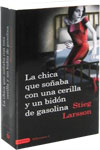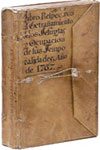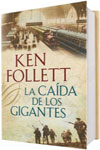The Method of Fluxions and infinite series with its application to the Geometry of Curve-Lines … To which is subjoin d, a perpetual comment upon the whole Work
NEWTON, Sir Isaac
Librería:
Detlev Auvermann Rare Books, Sevenoaks, KENT, Reino Unido
Calificación del vendedor: 4 de 5 estrellas
![]()
Vendedor de AbeBooks desde 10 de octubre de 2017
Descripción
Descripción:
FIRST EDITION, AN INTERESTING COPY WITH SOME EARLY CORRECTIONS OR NOTES IN INK AND PENCIL, OF NEWTON S WORK ON FLUXIONS, ONE OF HIS GREATEST MATHEMATICAL WORKS (Cambridge Companion to Newton). This is Newton s fullest exposition of the calculus; though the last of his works on calculus to be published, it was the work which he himself intended to publish first, in Latin, in 1671. The first page of the manuscript (preserved in Cambridge University Library) is lost and the title De Methodus Fluxionum was supplied by John Colson when he first published it in this translation, with his own extensive commentary. Written in 1671, Newton s Fluxions is a key document in the controversy over whether Newton or Leibniz had priority in discovering differential calculus. Newton did not publish anything on the calculus until after 1700, whereas Leibniz began publishing papers on the subject in 1684; however, Leibniz s manuscript notes on the calculus date back only to 1673, eight years after Newton began investigating the subject. By 1671, Newton was in a position to give his clearest statement to date of the fundamental problem of the calculus, and to present a successful general method (Norman Catalogue). In the Method, Newton gives the solution of a series of problems in illustration of this analytical art, mainly problems of maxima and minima, tangents, curvatures, areas, surfaces, volumes and arc lengths. With qualities represented as generated by continuous flow, all of these problems can be reduced to the following two (one the inverse of the other). 1. Given the length of the space at every time, to find the speed of motion at any proposed time. 2. Given the speed of motion at every time, to find the length of the space described in the proposed time. This is among the greatest generalizations in the history of mathematics, reducing the great majority of problems faced by mathematicians of the time to two basic problems (Cambridge Companion to Newton). It was often lamented that the world had had to wait for so many years to see Newton s masterpiece on fluxions. It is astonishing to realize that publication sixty years beforehand would have changed the history of the calculus and would have avoided for Newton any controversy over priority. In 1736 all the results contained in Newton s treatise were well known to mathematicians. However, it was too concise for a beginner, and Colson added almost 200 pages of commentary. His commentary contributed to the establishment of a kinematical approach to the problem of foundations (N. Guicciardini, The Development of Newtonian Calculus in Britain 1700-1800 pp. 56-57). Provenance: contemporary corrections and a few side notes by an unidentified reader to several equations or text on pages 50, 53, 60, 68, 79, 87, 93, 94, 95, 96, 107, 108, 110, 111, 112, 113, 114, 119, 120, 132, 135, 138, 157, 275; twentieth-century bookplate of the physicist and writer Edward Neville da Costa Andrade (1887-1971) on front paste-down. N° de ref. del artículo ABE-1596305100119
Detalles bibliográficos
Título: The Method of Fluxions and infinite series ...
Editorial: London, Henry Woodfall.
Año de publicación: 1736
Encuadernación: Hardcover
Condición: Very Good
Edición: 1st Edition
IberLibro.com es un mercado online donde puede comprar millones de libros antiguos, nuevos, usados, raros y agotados. Le ponemos en contacto con miles de librerías de todo el mundo. Comprar en IberLibro es fácil y 100% seguro. Busque un libro, realice el pedido a través de nuestra página con toda confianza y recíbalo directamente de la librería.
Busque entre millones de libros de miles de librerías
Libros usados
Bestsellers rebajados, autores destacados y una gran variedad de libros por menos de 5 €. Si su pasatiempo es leer, éste es su espacio.
Libros antiguos y de colección
Compendio vital para el amante del libro antiguo: libros firmados, primeras ediciones, facsímiles, librerías anticuarias o destacados.
Libros con envío gratis
Gastos de envío gratuitos para miles de libros nuevos, antiguos y de ocasión. Sin compra mínima.






